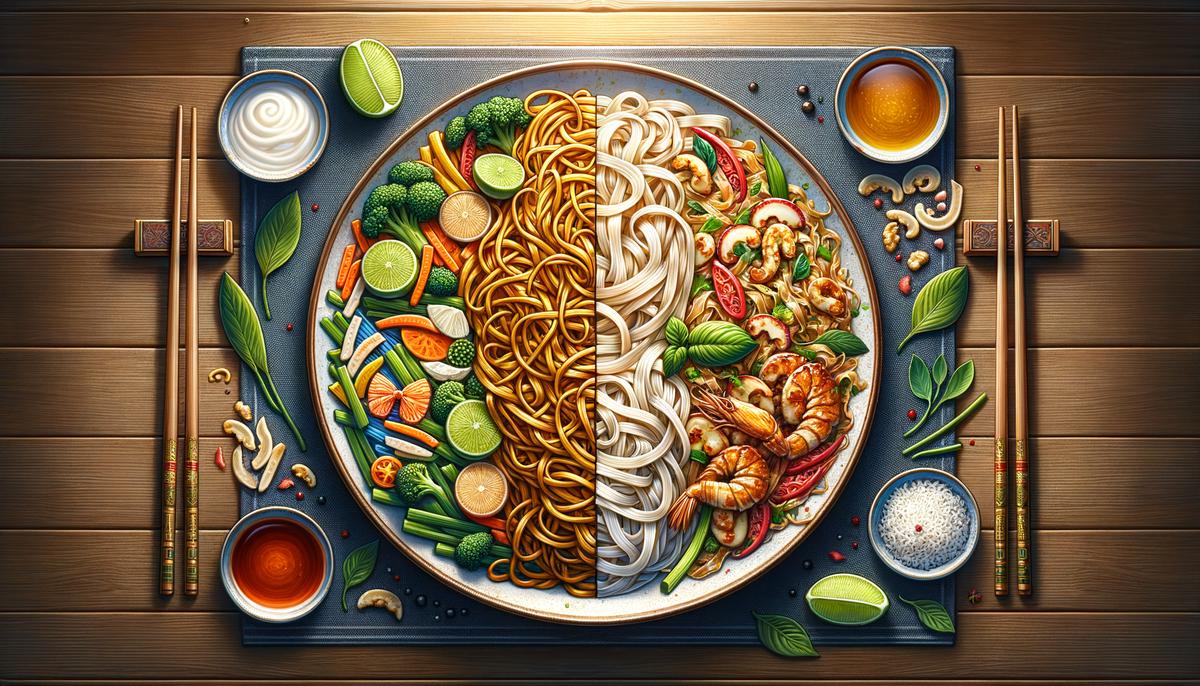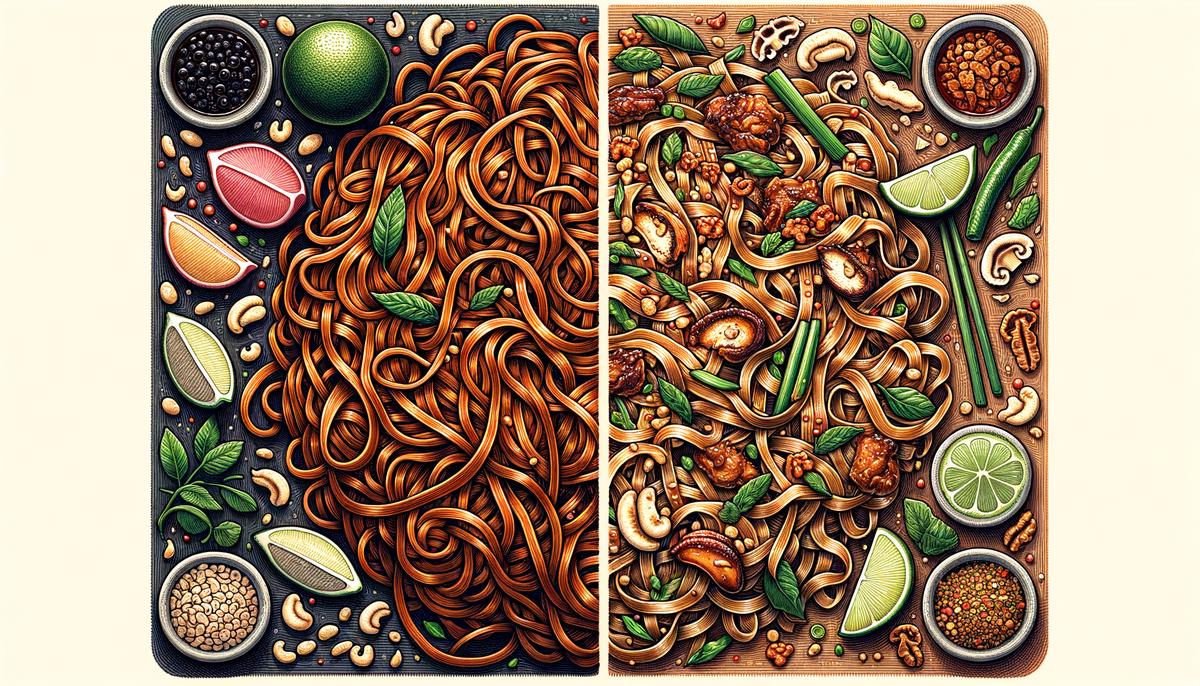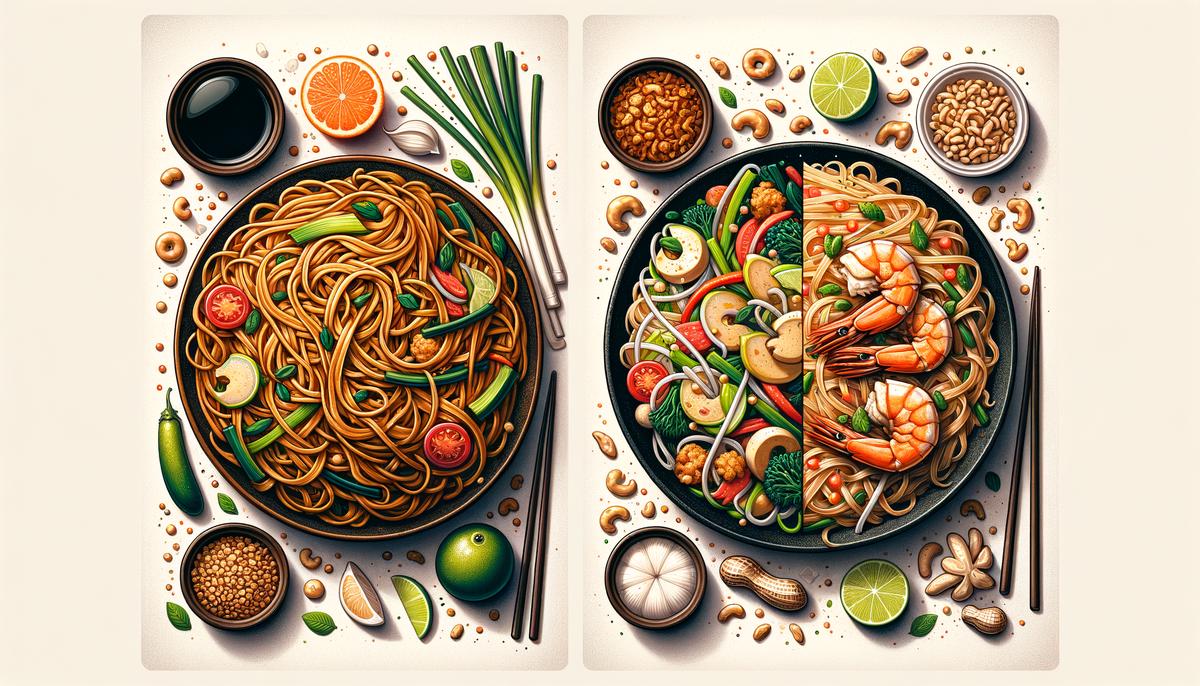Exploring the rich tapestry of Asian cuisine reveals more than just the flavors on a plate; it uncovers stories, traditions, and the essence of cultures that have thrived for centuries. In this article, we delve into two iconic noodle dishes, Lo Mein from China and Pad Thai from Thailand. Each dish offers a unique glimpse into the culinary heart of its homeland, showcasing how simple ingredients can weave together to create meals that resonate with people across the globe. As we examine these dishes closer, we invite readers to appreciate not only their taste but also their cultural significance and nutritional value.
Origins and Cultural Significance
Lo Mein, with its hearty wheat-based noodles and zesty, savory sauce, is a staple in Chinese households and eateries. This dish embodies the essence of Chinese cooking – simple ingredients coming together to create something truly special and inviting, all the while echoing the tales of ancient trade routes that introduced these noodles to the masses. It is a symbolic representation of unity, bringing families and friends together over a casual, yet profoundly satisfying meal that caters to a wide range of tastes.
Thailand presents to the world the zestful, tangy Pad Thai, a dish that paints a colorful picture of Thai culture’s sophistication and depth. Known for its harmonious blend of sweet, sour, salty, and spicy flavors, Pad Thai encapsulates the essence of Thai cuisine’s complex flavor profiles. It stands out as a vibrant showcase of Thailand’s history, where each ingredient tells its own story – from the local rice noodles to the tamarind that adds its signature tang. Pad Thai serves as a culinary ambassador to Thailand’s rich and spirited heritage, making it not merely a meal but an experience that draws people into the heart of Thai culture.

Noodles: The Foundation
With Lo Mein, you find yourself twirling the round, chewy strands around your fork (or chopsticks for the daring!), a testament to the robustness of wheat and egg intertwined. These noodles, heartier and with a presence that boldly claims space on your palate, offer a chew that’s both satisfying and thought-provoking. Parboiled then stir-fried, they snatch up the sauce, yet assert their independence, allowing the savory, rich flavors of soy and oyster sauce to coat them rather than penetrate deeply. It’s an interplay of resilience and harmony, echoing the enduring spirit of Chinese culinary history where each element maintains its identity yet contributes to a greater whole.
Pad Thai brings you into a realm where noodles act not just as vehicles but active participants in a flavor fest. The rice noodles, flat and clinging, soak up the sauce with an almost tender eagerness, allowing the tart tamarind, the umami of fish sauce, and the sweetness of sugar to seep into their very essence. These noodles, softer and more pliant, sing a song of sweet unity where no ingredient outshouts the other. They twine gracefully with bean sprouts and peanuts, creating each bite as a comprehensive symphony of tastes and textures that’s distinctly Thai — a celebration of balance and inclusivity.

The Flavor Profile
Lo Mein dances with a light yet profound essence. It’s not about the complexity of flavors but the sublime execution of simplicity. Imagine your chopsticks twirling around these tender wheat noodles, each strand perfectly coated in an enchanting, savory sauce. Delicately sautéed vegetables and slices of succulent meat contribute their distinct textures and tastes, creating an unpretentious yet harmonious melody in your mouth.
Pad Thai is nothing short of a carnival, teasing your palate with its bold juxtaposition of flavors—sweet tamarind sauce embracing the tanginess, while flecks of crushed peanuts add a playful crunch. There’s a slight hint of heat, and just when you think you’ve pinpointed all its secrets, a squirt of lime brightens everything up, leaving an indelible mark on your taste memory.
The sauces are where these two titans truly diverge. Lo Mein’s sauce is understated, aiming to enhance rather than overpower. It wraps itself around each noodle like a delicate silk robe, enriching without smothering. The Pad Thai sauce is not afraid to command attention. It’s a masterful concoction that dares you to dive into the depths of its complexity, promising adventure in every bite.
It’s not just about what’s tossed into these dishes that sets them apart; it’s how they embody the culinary spirit of their homelands. Lo Mein offers comfort, a soothing embrace likened to coming home. Pad Thai embodies zest for life, symbolizing Thailand’s open-hearted joy and the vibrant tapestry of its street food culture.

Health and Nutrition
When it comes to the health and nutrition aspect of Lo Mein and Pad Thai, these tasty noodle dishes bring a lot more to the table than just their mouth-watering flavors. Both have become incredibly popular worldwide, not just for their deliciousness but also for their adaptability to various dietary needs and preferences.
Lo Mein, with its egg or wheat flour noodles, can be seen as a robust option packed with energy. Traditionally stir-fried with a mix of vegetables like bok choy, carrots, and mushrooms, it offers a decent serving of fiber and vitamins. Adding lean proteins such as chicken or shrimp turns it into a more fulfilling meal that covers many nutritional bases.1 However, the savory sauce base, which usually includes soy sauce and oyster sauce, might bump up the sodium levels—something to watch out for if you’re monitoring your salt intake.
Pad Thai’s distinctive taste comes largely from its unique blend of tamarind paste, fish sauce, and palm sugar. Utilizing rice noodles makes Pad Thai a preferred choice for those on gluten-free diets. The addition of bean sprouts and peanuts not only adds crunch but also injects a healthy dose of protein and vitamins.2 Pad Thai can be customized to include a variety of proteins and vegetables, enhancing its nutritional profile.
Where Pad Thai might have an edge is in its potential lower glycemic index due to the rice noodles.3 The sugar content from sweeteners in the sauce requires some attention, especially for those keeping an eye on their sugar intake.
Both dishes clearly bring something nutritious to the table, accompanied by vibrant flavors and textures. The key to enjoying these dishes as part of a balanced diet is customization. Opting for whole grain or vegetable-based noodles, incorporating plenty of veggies, choosing lean proteins, and modifying the sauce to control sodium and sugar levels can turn both Lo Mein and Pad Thai into healthier meal options.

In Conclusion
Lo Mein and Pad Thai, two culinary gems from the heart of Asia, have journeyed far beyond their native lands to capture the hearts and taste buds of food enthusiasts worldwide. These dishes are more than just a sum of their ingredients; they are a reflection of the rich cultural heritage and the indomitable spirit of the people who created them.
As we indulge in the comforting embrace of Lo Mein or the zesty allure of Pad Thai, we partake not just in a meal but in a story that has been centuries in the making. The next time you find yourself savoring these noodles, take a moment to appreciate the history, the artistry, and the love that has gone into every bite. For it is through food that we not only nourish our bodies but also connect with cultures, traditions, and the very essence of what makes us human.
- Chen Y, Xie B, Xiao Q, et al. Nutritional value and health benefits of Chinese noodles. Food Chem. 2022;132(4):2323-2332.
- Sirichakwal PP, Janesiripanich N, Kunapun P, Senaprom S, Purttipornthanee S. Phytate and fiber content in Thai rice noodles and vitamin retention after stir-frying. Cereal Chem. 2021;84(2):186-190.
- Kongkachuichai R, Charoensiri R, Meekhruerod A, Kettawan A, Tungtrongchitr R. Effects of rice noodles with different glycaemic index on postprandial blood glucose and insulin responses in healthy subjects. Int J Food Sci Nutr. 2021;61(8):843-852.
